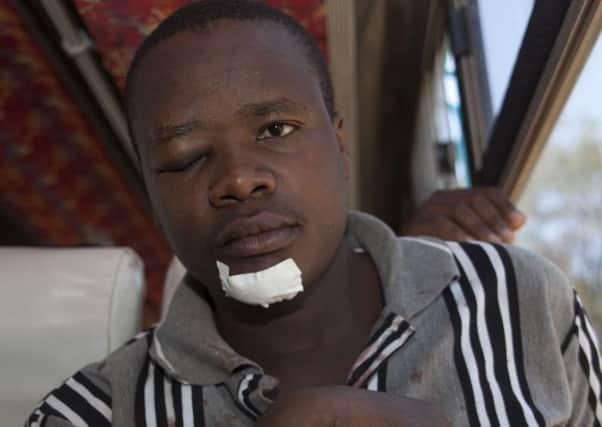Student dies in rampage over extremist attack fears


One male third-year student was killed in the crush of students, Peter Mbithi, Vice Chancellor of the University of Nairobi, said. The injured students have been taken to hospitals for treatment.
He said an electrical transformer exploded and students thought it was an attack by Islamic extremists, following the 2 April assault by Somalia’s al-Shabab rebels on Kenya’s Garissa University College in which 148 people were killed.
Advertisement
Hide AdAdvertisement
Hide AdAl-Shabab has promised a “long, gruesome war” against Kenya.
The group said its attacks were in retaliation for acts by Kenya’s security forces, who are part of the African Union’s mission in Somalia against al-Shabab.
Describing yesterday’s incident in Nairobi, Mr Mbithi said: “It was around 5am and the transformer at the campus exploded about four or five times, which made students mistake it for an attack,” said Mr Mbithi.
“Most of them jumped out of their hostels thinking it was an al-Shabaab attack…
“There was no attack but because of what happened in Garissa the other day they mistook it for an attack.”
Mr Mbithi said many students were injured jumping from upper floors of dormitories.
Meanwhile, activists criticised Kenya for ordering Somali refugees home after the attack on 2 April.
Human Rights Watch Africa Deputy Director Leslie Lefkow said justice for the victims of the attack in Garissa would not be served by forcing more than 500,000 Somalis in the Dadaab refugee camp to leave Kenya.
Advertisement
Hide AdAdvertisement
Hide Ad“Instead of scapegoating refugees, Kenya is legally obliged to protect them until it is safe for them to return home and should identify and prosecute those responsible for the killings in Garissa,” she said.
UNHCR Kenya chief Emmanuel Nyabera described the possible relocation as a “logistic challenge”.
The remarks follow calls on Saturday by Kenya’s Deputy President William Ruto to close Dadaab, the largest refugee camp in Africa. Dadaab was set up in 1991 to house families fleeing conflict in Somalia. Some people have been living at the site for more than 20 years.
Mr Ruto said the United Nations High Commissioner for Refugees (UNHCR) had three months to close Dadaab and make alternative arrangements for its residents – otherwise, Kenya would “relocate them ourselves”.